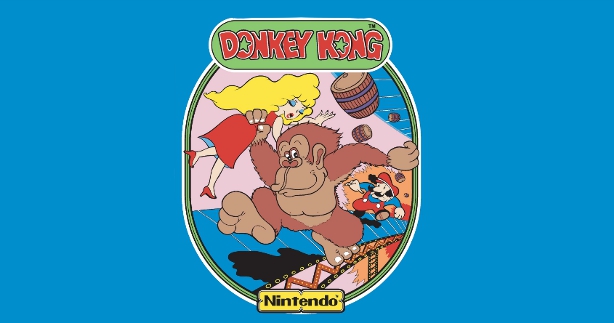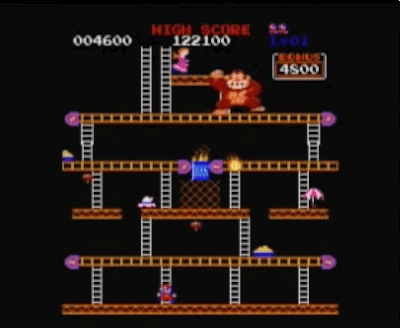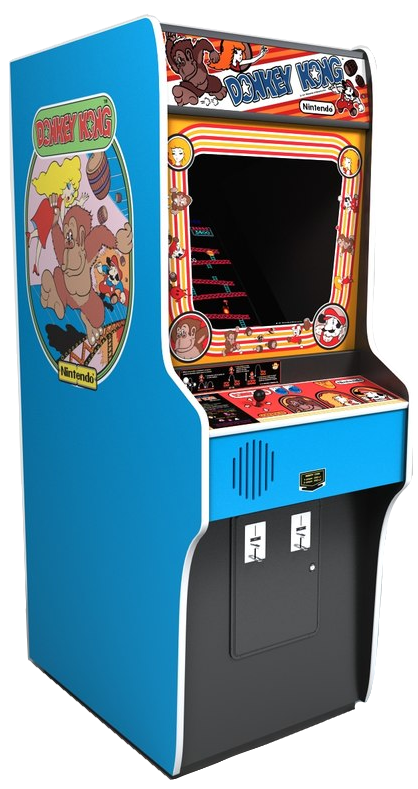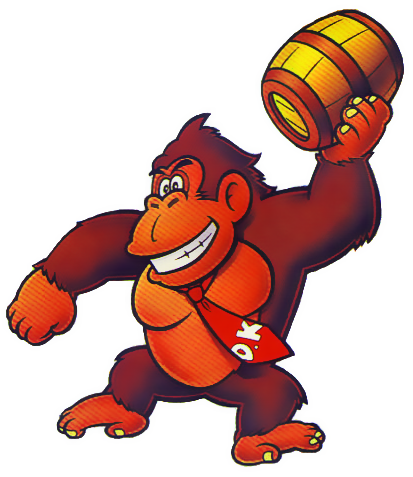Donkey Kong

Donkey Kong is an arcade game released by Nintendo in 1981. An early example of the platform game genre, the gameplay focuses on maneuvering the main character across a series of platforms while dodging and jumping over obstacles. In the game, Mario (originally named Mr. Video and then Jumpman) must rescue a damsel in distress named Pauline (originally named Lady), from a giant ape named Donkey Kong. The hero and ape later became two of Nintendo's most popular and recognizable characters. Donkey Kong is one of the most important games from the golden age of arcade video games as well as one of the most popular arcade games of all time.
 Although Nintendo's American staff was initially apprehensive, Donkey Kong succeeded commercially and critically in North America and Japan. Nintendo licensed the game to Coleco, who developed home console versions for numerous platforms. Other companies cloned Nintendo's hit and avoided royalties altogether. Miyamoto's characters appeared on cereal boxes, television cartoons, and dozens of other places. A lawsuit brought on by Universal City Studios (which later would drop "City"), alleging Donkey Kong violated their trademark of King Kong, ultimately failed. The success of Donkey Kong and Nintendo's victory in the courtroom helped to position the company for video game market dominance from its release in 1981 until the late 1990s.
Although Nintendo's American staff was initially apprehensive, Donkey Kong succeeded commercially and critically in North America and Japan. Nintendo licensed the game to Coleco, who developed home console versions for numerous platforms. Other companies cloned Nintendo's hit and avoided royalties altogether. Miyamoto's characters appeared on cereal boxes, television cartoons, and dozens of other places. A lawsuit brought on by Universal City Studios (which later would drop "City"), alleging Donkey Kong violated their trademark of King Kong, ultimately failed. The success of Donkey Kong and Nintendo's victory in the courtroom helped to position the company for video game market dominance from its release in 1981 until the late 1990s.
 Donkey Kong is considered to be the earliest video game with a storyline that visually unfolds on screen. The eponymous Donkey Kong character is the game's de facto villain. The hero is a carpenter originally unnamed in the Japanese arcade release, later named Jumpman and then Mario. Donkey Kong kidnaps Mario's girlfriend, originally known as Lady, but later renamed Pauline. The player must take the role of Mario and rescue her. This is the first occurrence of the damsel in distress scenario that would provide the template for countless video games to come.
Donkey Kong is considered to be the earliest video game with a storyline that visually unfolds on screen. The eponymous Donkey Kong character is the game's de facto villain. The hero is a carpenter originally unnamed in the Japanese arcade release, later named Jumpman and then Mario. Donkey Kong kidnaps Mario's girlfriend, originally known as Lady, but later renamed Pauline. The player must take the role of Mario and rescue her. This is the first occurrence of the damsel in distress scenario that would provide the template for countless video games to come.
Donkey Kong is the first example of a complete narrative told in video game form, and like 1980's Pac-Man, it employs cutscenes to advance its plot. The game opens with the gorilla climbing a pair of ladders to the top of a construction site. He sets Pauline down and stomps his feet, causing the steel beams to change shape. He then moves to his final perch and sneers. A melody then plays, and the level (or stage) starts. This brief animation sets the scene and adds background to the gameplay, a first for video games. Upon reaching the end of the stage, another cutscene begins. A heart appears between Mario and Pauline, but Donkey Kong grabs the woman and climbs higher, causing the heart to break. The narrative concludes when Mario reaches the end of the rivet stage. He and Pauline are reunited, and a short intermission plays.The gameplay then loops from the beginning at a higher level of difficulty, without any formal ending.

